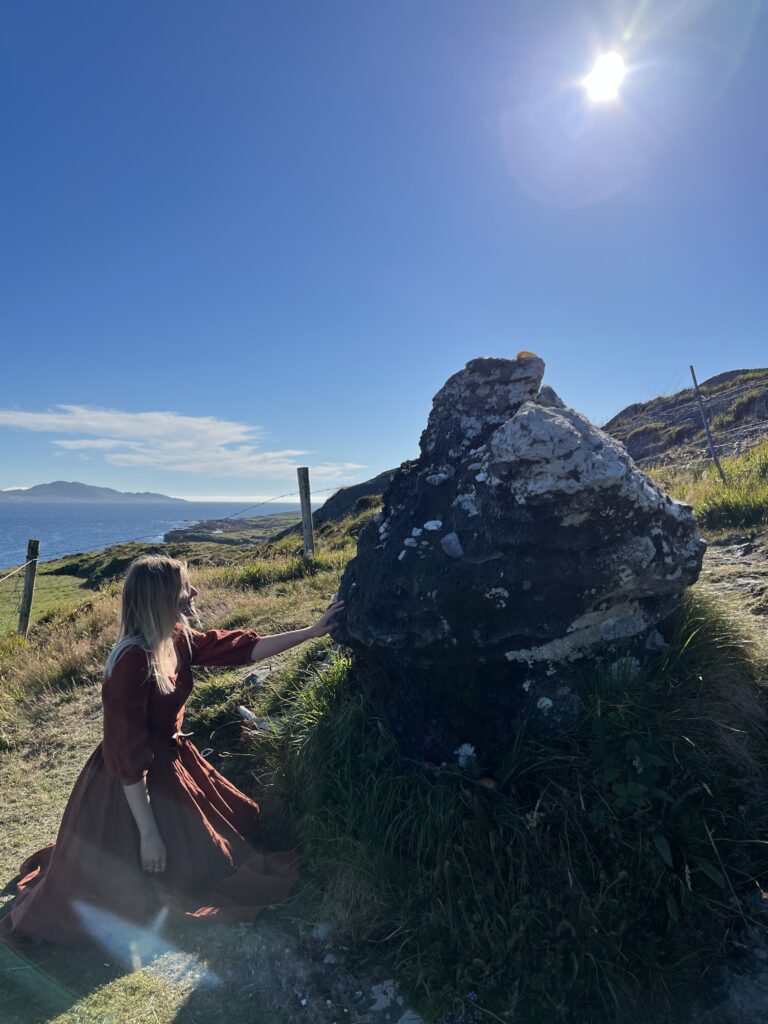
As our boat sped across the glasslike surface of the water, away from the safety of the harbor and out toward the rocky, wild islands in the distance, tears formed in my eyes.
And they did not stop forming.
My shoulders shook silently and tears rolled down my cheeks as we sailed alongside Dursey Island, originally known as Oileán Baoi or the Island of Buí — said to be the home of the Cailleach Beara.
The island itself is like a rocky fortress, rising out of the deep blue sea. Its great stone walls towered over us, casting our small boat in its shadow. I closed my eyes, leaning into the energy emanating from this place.
A vision, clear as the scene I had just left behind, danced through my mind: the mighty cliff walls cracking open, revealing a large, dark cavern deep within the belly of the earth. Within this cavern was a circle of women — and within that circle, one woman who towered over the rest.
She was wild, ancient, powerful; she was the the Cailleach.
In this vision, I felt as if I had sunk into the womb of Earth herself. This was a sacred place; a place where the goddesses were born, where they sourced their power, and where they now slept.
Surrounded by land, sea, and sky, I experienced a deep feeling of belonging, of “rightness” within the world, and of love — deep, deep love for all women, and a fierce desire to protect them.
This place, this energy, this memory touched me deeply — and that feeling remained, long after I opened my eyes.
Who is An Cailleach?
The Cailleach is the Divine Hag, the Veiled One, the Queen of Winter.
She is a deity, divine ancestor, and archetypal crone or wise woman in Ireland, Scotland, and the Isle of Man. The Cailleach has many associations, but among her most prominent are wild places, rock formations, winter storms, winds, and animals — especially wolves, owls, hares, and goats.
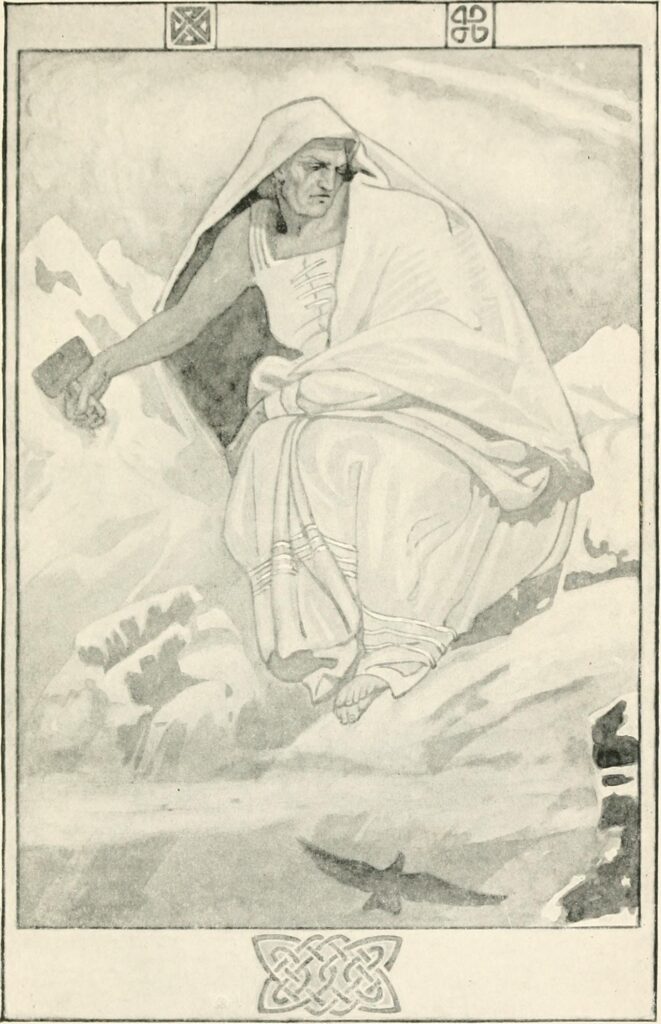
She “rules” the season of winter, from Samhain through Bealtaine, bringing harsh weather and winds. According to some legends, she turns to stone on the last day of winter to wait out the summer months. Other tales tell of how the Cailleach lived seven lives as a maiden, watching as her husbands and children passed on, before she turned to stone.
With the power to control the weather and the seasons, she also holds the power of life and death in her hands. Her icy, wild winds can bring death and destruction, but these are necessary forces that pave the way for rest, rebirth, and renewal.
The Cailleach is associated with wild places and rugged landscapes. The legends tell of her striding across Ireland, giant in size, with stones falling from her apron and forming the hills, cairns, and other features that still mark these lands.
Hag’s Head at the Cliffs of Moher and Hag’s Mountain (Sliabh na Caillí) in the Boyne Valley are two of the most well-known locations associated with the Cailleach.
But Counties Cork and Kerry — especially the Beara Peninsula, which straddles both counties — are steeped in their own myths and legends of the Divine Hag.
Her local names and legends are numerous, but in July 2022 I met her as An Chailleach Bhéara, or the Hag of Beara, while spending a few days on the Beara Peninsula — her original home, according to some myths.
The Hag of Beara
As the shaper of wild landscapes and the the personification of wind, water and rock, the Cailleach truly is everywhere you look on this rugged and remote peninsula.
Dursey Island (the Island of Buí), located at the tip of the Beara Peninsula, is said to be the home of An Chailleach Bhéara. Buí is yet another of the Cailleach’s many names, as well as a variant of the word bó, meaning cow.

The island is only accessible by cable car, which was out of operation on the day I visited — hence how I ended up exploring the waters around the island by boat, instead.
Our guide also took us to Calf Rock, Cow Rock, and Bull Rock — three small, rocky islands, each one larger and more impressive than the last, located off the coast of the Beara Peninsula.
There is a natural opening at the bottom of Bull Rock that you can sail through, sometimes referred to as the “entrance to the underworld.” Passing through this massive rock formation felt like a symbolic rebirth, traveling through the damp darkness and reemerging into the light on the other side.
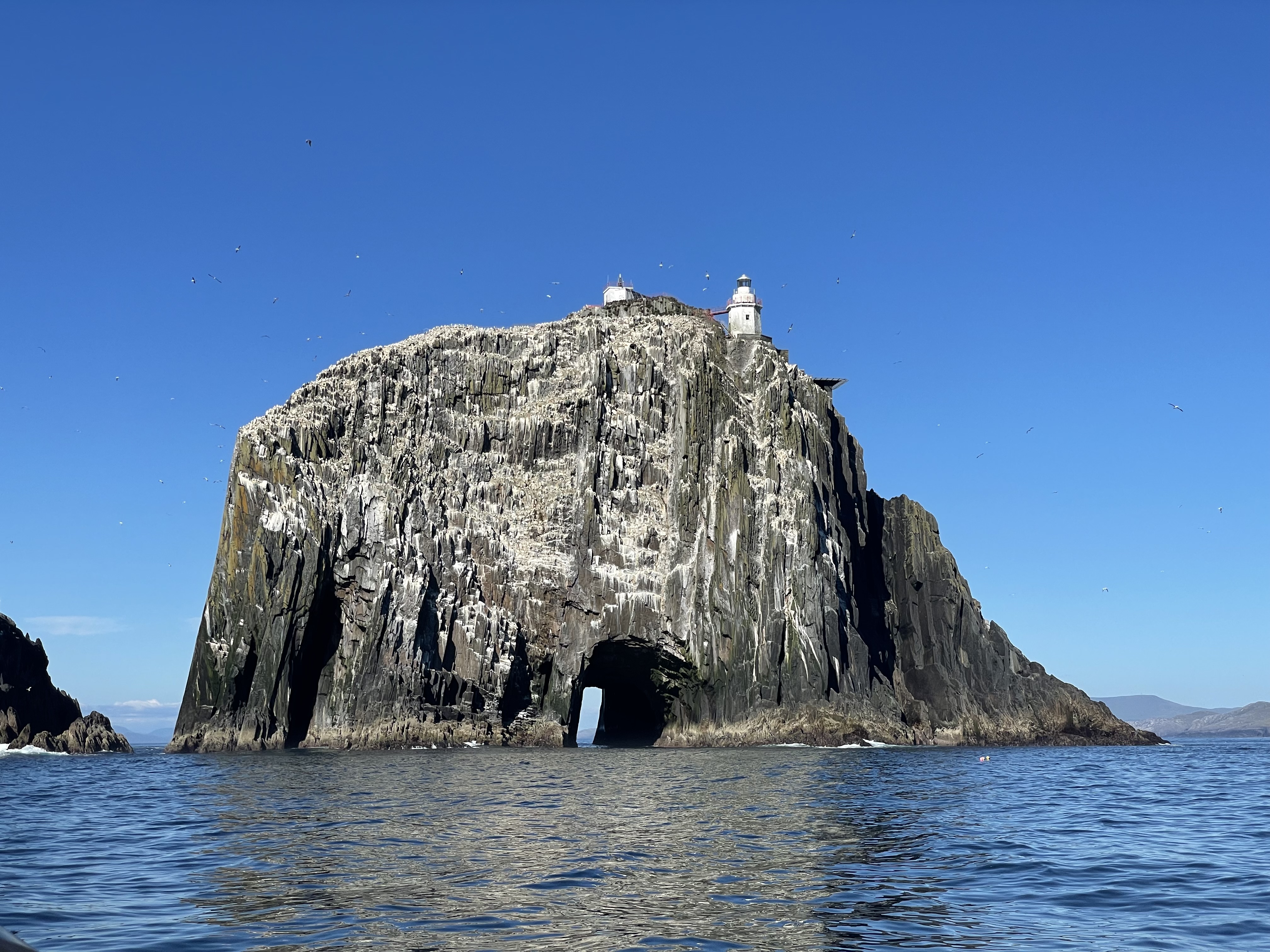
A forty-five minute drive northeast from the Dursey Island cable car is yet another powerful site associated with the Cailleach: the Hag of Beara stone.
According to legend, this large rock is actually the fossilized remains and resting place of the Cailleach Beara, who turned to stone while staring out at sea awaiting the return of her husband.
I left an offering and a prayer at the Hag of Beara (and was far from the first to do so; stones, crystals, coins, and other trinkets covered the rock) the day before venturing out into the waters around Dursey Island.
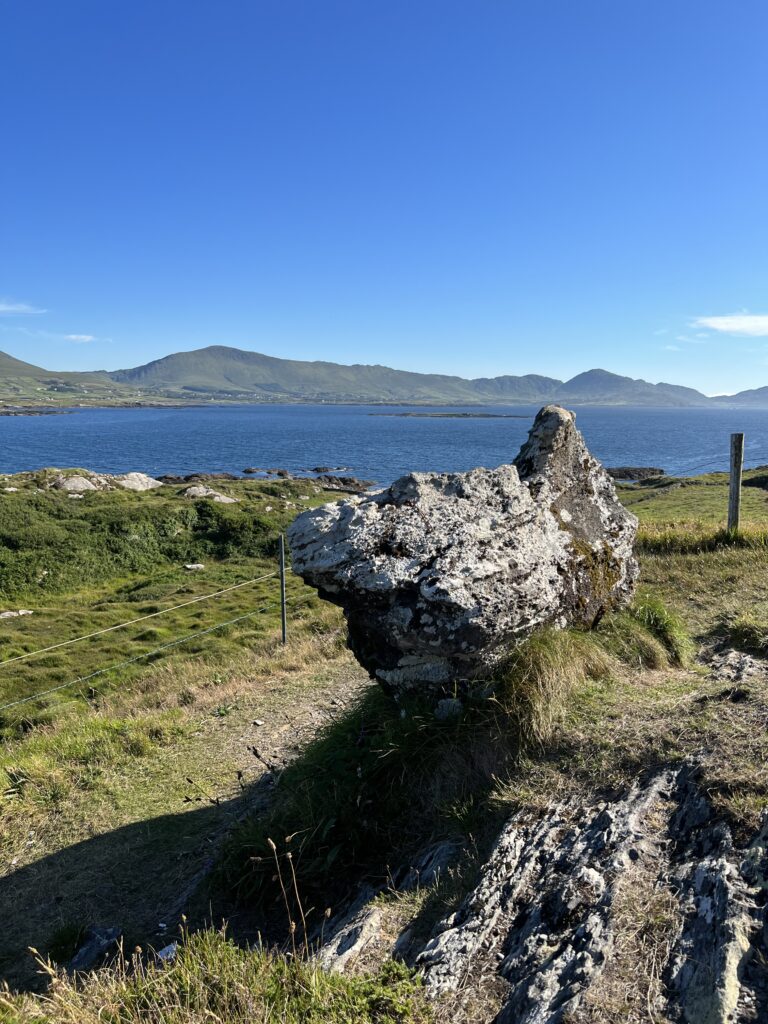
Though the Cailleach did not answer my call on the day I visited this rock and left her an offering, her return call did come on the following day — more strongly than I could have imagined.
Surrounded by the ancient trinity of land, sea, and sky, I felt her presence: unimaginably ancient, sacred, wild, and wise, but also deeply loving — an endless ocean of love.
It has been just over six months since this first encounter with the Cailleach Beara, and as I write these words in late January, I can say that my first winter in Ireland has plunged me into an even deeper understanding of her ancient ways.
Deeper, yes — but still a stranger to the mysteries that live and dance below the surface.
The Cailleach reminds me that true wisdom is acquired slowly, with time; fortunately, patience has always been my forte.
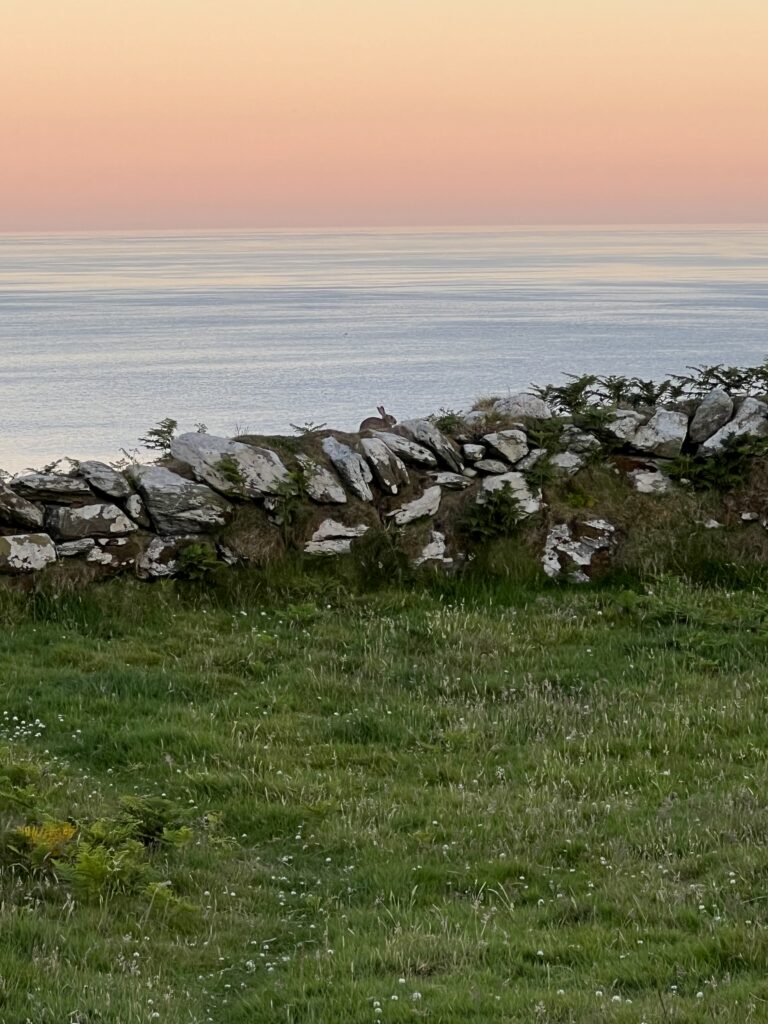
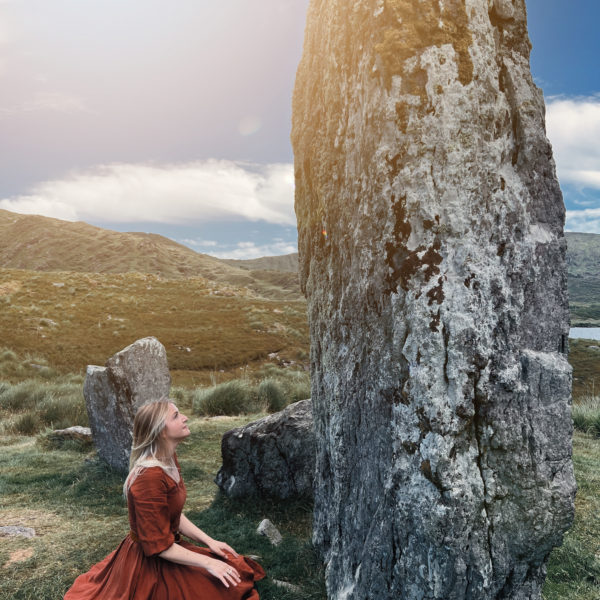

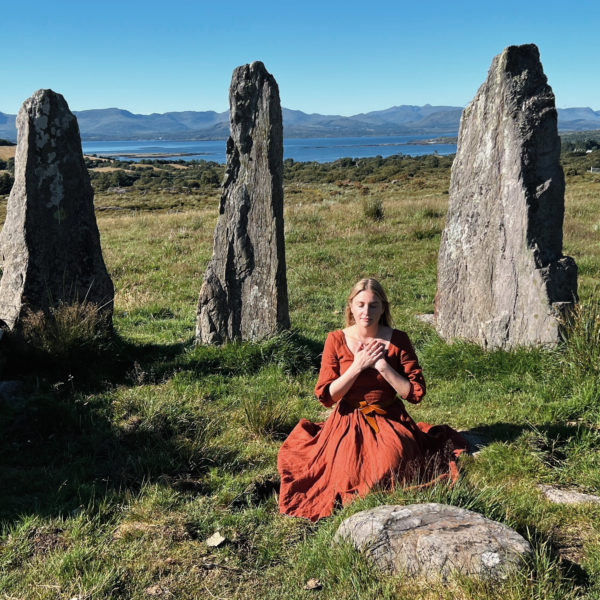

Like the Cailleach, I can relate to waiting out the summer months until winter again returns!
Three or more years ago, at the start of the new year, I was suddenly overcome for the north! Cooler winds,
fresher air, snow, cold, ( but not to be cold inside). I find it still difficult to explain this longing.
It’s now Spring and each day, I say a silent goodbye to our melting snows.